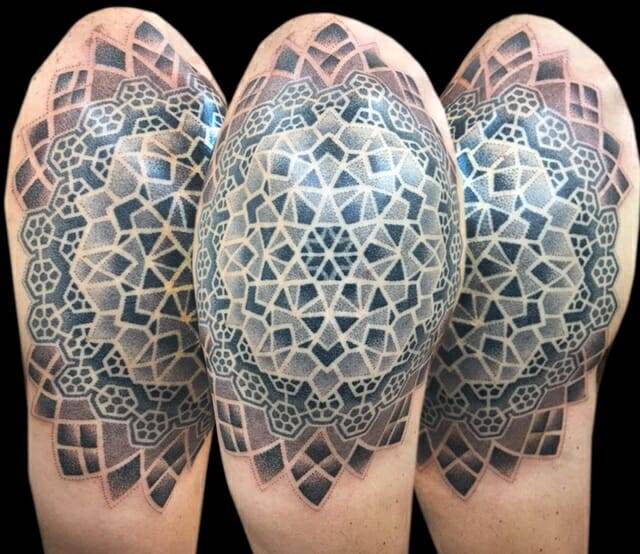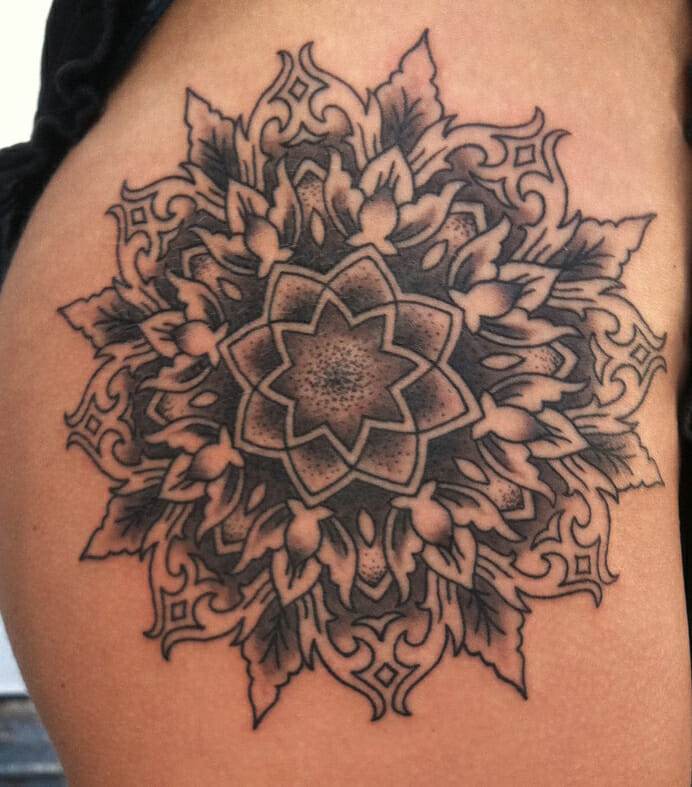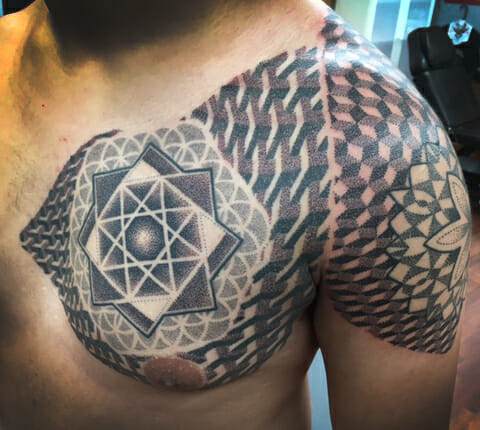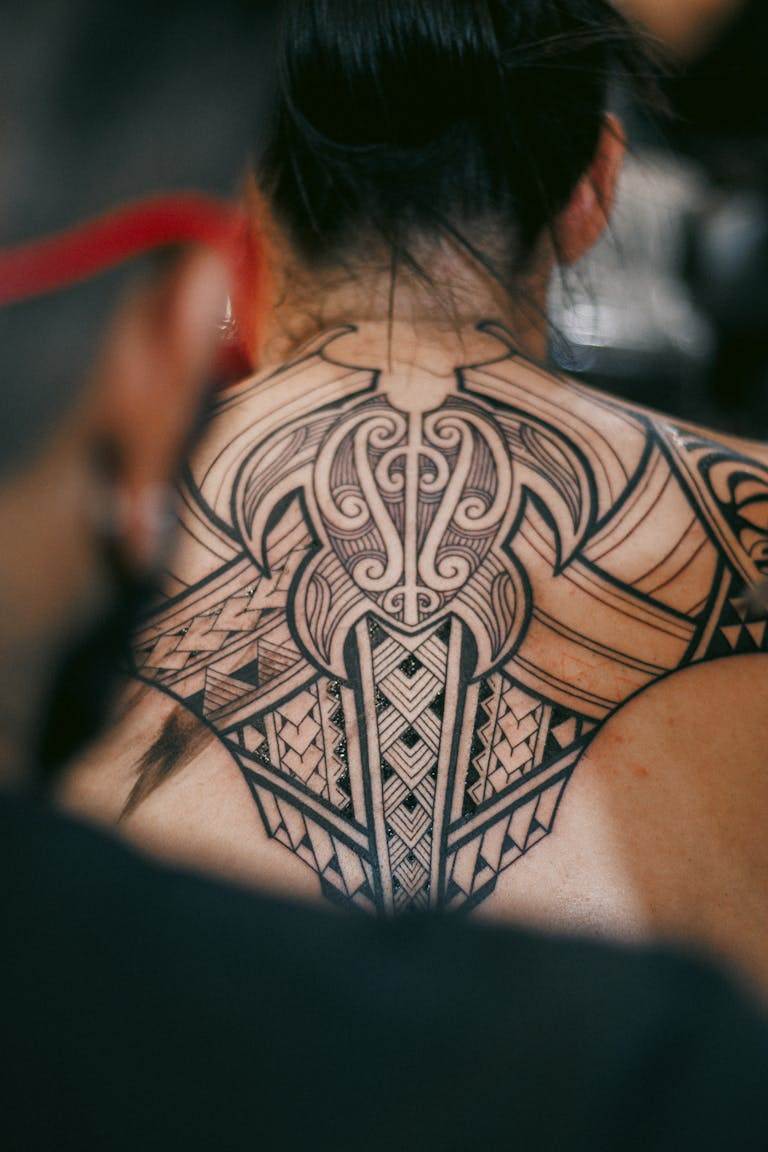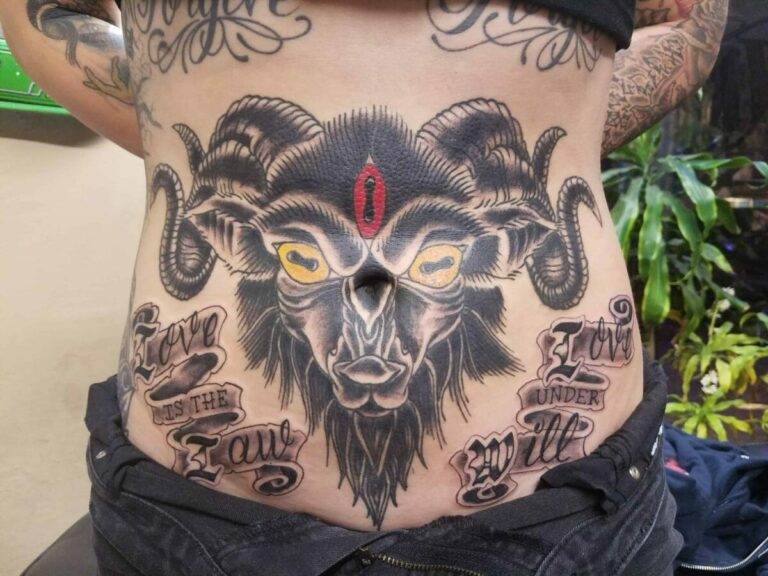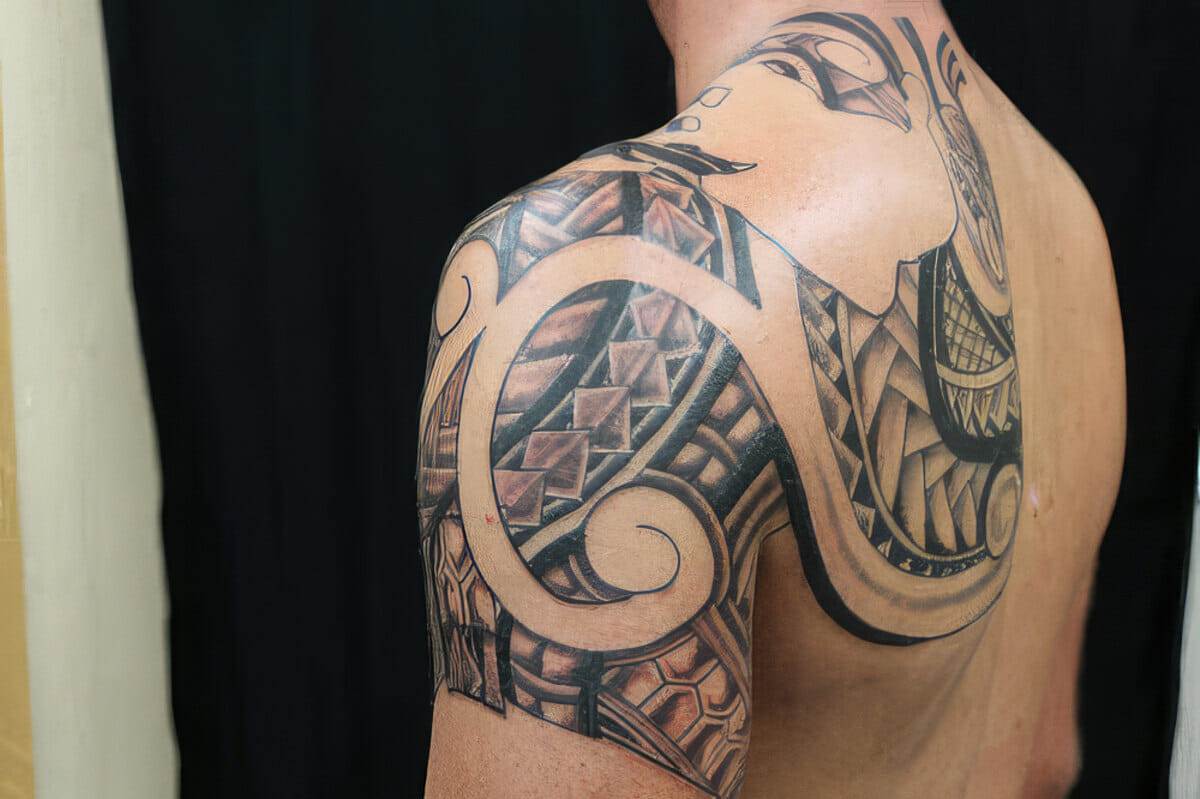
What are Polynesian tattoos?
Polynesian tattoos, also known as Pacific tattoos, are intricate and symbolic body art designs that originated in the Polynesian islands of the Pacific Ocean. These tattoos are characterized by their bold lines, geometric patterns, and intricate details. Traditionally, Polynesian tattoos were manually crafted by using a technique called “tattooing by hand” or “tattooing by stick” where the ink was inserted into the skin using a stick or bone instead of a modern tattoo machine.
History and significance of Polynesian tattoos
Polynesian tattoos have a rich cultural history and hold deep significance in the Polynesian communities. The art of tattooing was passed down through generations and served multiple purposes, such as status markers, spiritual protection, and representations of identity and heritage. These tattoos were often used to symbolize important life events, achievements, and social standing within the community.
The designs of Polynesian tattoos are heavily influenced by nature, mythology, and Polynesian belief systems. Each design carries its own symbolism, and traditional Polynesian tattoo artists were highly skilled in interpreting these meanings and creating custom designs for individuals.
The cultural significance of Polynesian tattoos has gained recognition worldwide, and many people now choose to adorn their bodies with these beautiful and meaningful designs as a way to connect with Polynesian culture and express their own personal journey or beliefs.
Traditional Polynesian Tattoo Designs
Symbols and motifs used in Polynesian tattoos
Polynesian tattoos incorporate a variety of symbols and motifs that hold deep cultural significance. Some common symbols used in Polynesian tattoo designs include:
- Tiki: The Tiki represents a spiritual figure in Polynesian mythology and is believed to bring protection and good fortune.
- Enata: Enata symbols represent humans and can be used to depict family, ancestors, or people’s relationships with each other.
- Shark teeth: Shark teeth are a popular design element in Polynesian tattoos, symbolizing strength, adaptability, and protection.
- Sun and waves: The sun and waves represent the power of the ocean and the connection to nature.
Meanings behind common Polynesian tattoo designs
Each Polynesian tattoo design carries its own unique meaning. Here are some common Polynesian tattoo designs and their meanings:
- Marquesan crosses: Marquesan crosses symbolize balance, harmony, and protection against evil spirits.
- Spearheads: Spearheads are often associated with warriors and symbolize strength, courage, and protection.
- Turtle shells: Turtle shell designs represent longevity, fertility, and guidance.
- Lizard patterns: Lizard patterns are believed to bring good luck and are often associated with protection from illness or danger.
These are just a few examples of the rich symbolism present in Polynesian tattoo designs. Traditional Polynesian tattoo artists continue to create custom designs that reflect the individual’s personal journey, identity, and connection to their Polynesian heritage.
Traditional Polynesian Tattoo Designs
Symbols and motifs used in Polynesian tattoos
Polynesian tattoos incorporate a variety of symbols and motifs that hold deep cultural significance. Some common symbols used in Polynesian tattoo designs include:- Tiki: The Tiki represents a spiritual figure in Polynesian mythology and is believed to bring protection and good fortune.- Enata: Enata symbols represent humans and can be used to depict family, ancestors, or people’s relationships with each other.- Shark teeth: Shark teeth are a popular design element in Polynesian tattoos, symbolizing strength, adaptability, and protection.- Sun and waves: The sun and waves represent the power of the ocean and the connection to nature.
Meanings behind common Polynesian tattoo designs
Each Polynesian tattoo design carries its own unique meaning. Here are some common Polynesian tattoo designs and their meanings:- Marquesan crosses: Marquesan crosses symbolize balance, harmony, and protection against evil spirits.- Spearheads: Spearheads are often associated with warriors and symbolize strength, courage, and protection.- Turtle shells: Turtle shell designs represent longevity, fertility, and guidance.- Lizard patterns: Lizard patterns are believed to bring good luck and are often associated with protection from illness or danger.
These are just a few examples of the rich symbolism present in Polynesian tattoo designs. Traditional Polynesian tattoo artists continue to create custom designs that reflect the individual’s personal journey, identity, and connection to their Polynesian heritage.
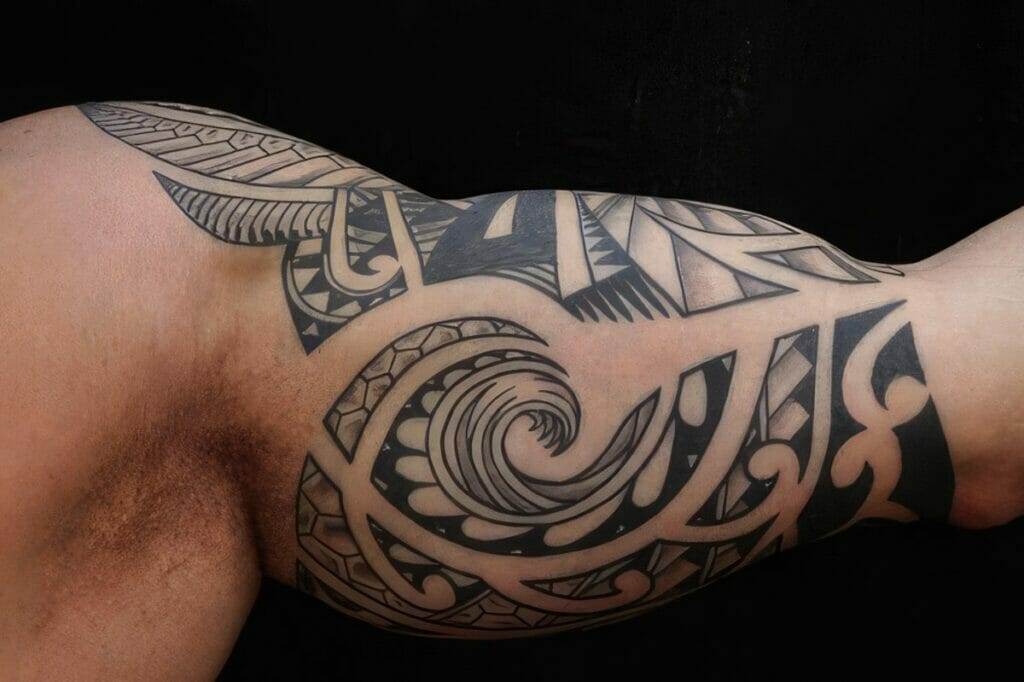
Techniques and Tools
Traditional Polynesian tattooing techniques
Traditional Polynesian tattooing is done using a technique called “ta tatau.” This technique involves using handmade tools made from bone, turtle shell, or wood, as well as pigments derived from natural sources such as soot or plant dyes. The artist taps the tools into the skin using a repetitive motion, creating intricate patterns and designs.
Tools used for Polynesian tattooing
The tools used for Polynesian tattooing include:- Combs: These are used to create the fine lines and patterns in the tattoo design.- Comb holders: These are used to hold the combs securely in place while tattooing.- Ink pots: These small containers hold the tattoo ink, which is applied to the skin using the tools.- Sponges or towels: These are used to wipe away excess ink and blood during the tattooing process.
The use of traditional techniques and tools adds to the authenticity and cultural significance of Polynesian tattoos. The process requires skill and precision, resulting in unique and meaningful works of art.
Cultural Significance
Polynesian tattooing as a rite of passage
Polynesian tattooing holds immense cultural significance and is often considered a rite of passage for individuals within the Polynesian community. It is a way to honor their ancestors, connect with their heritage, and mark important milestones in their lives. The process of receiving a traditional Polynesian tattoo involves enduring pain and discomfort, symbolizing strength and resilience. It is seen as a test of one’s commitment and dedication to their culture.
Polynesian tattooing in tribal and cultural ceremonies
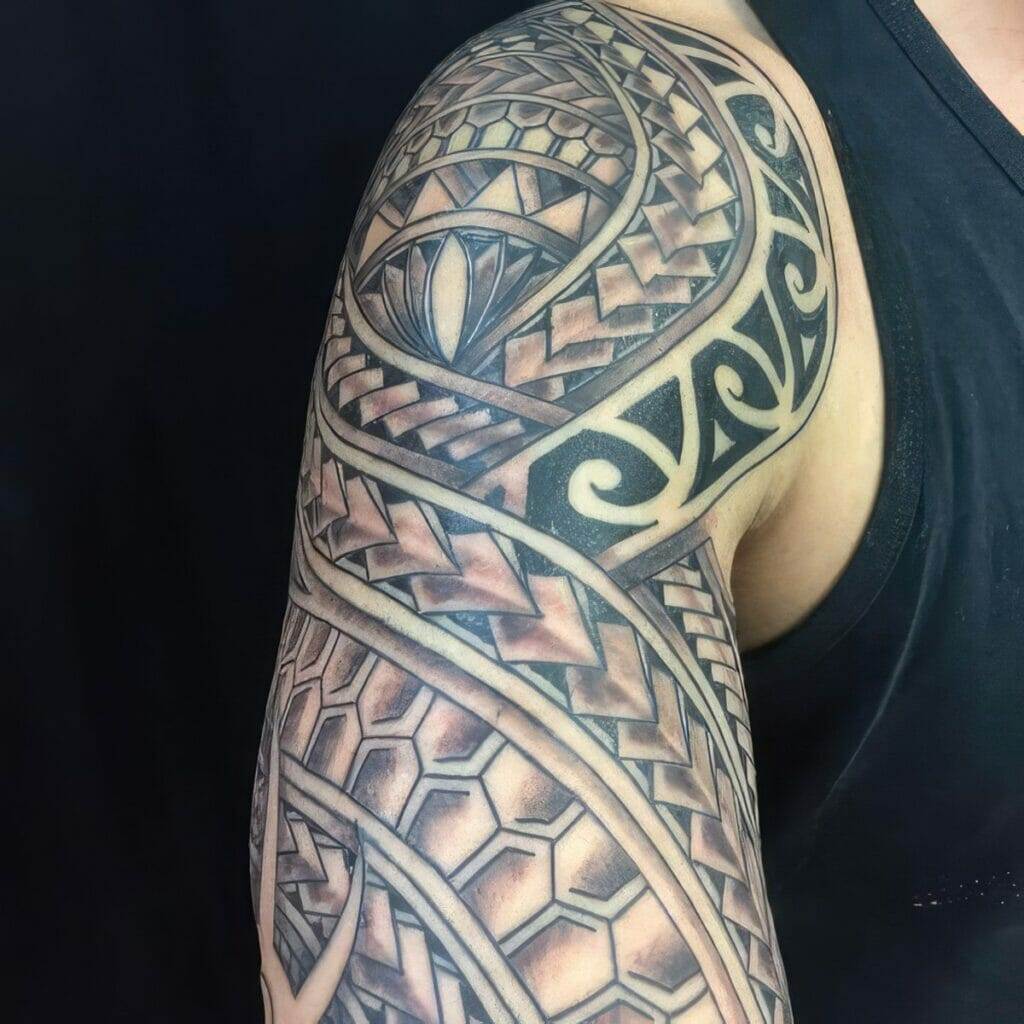
Polynesian tattooing is not merely a personal choice but an integral part of tribal and cultural ceremonies. These ceremonies often involve rituals, storytelling, and spiritual practices. The tattooing process itself is seen as a sacred act, and the tattoo artist is highly respected within the community. The designs chosen for the tattoos often reflect specific cultural symbols and narratives, serving as a visual representation of one’s identity and connection to their community.
The cultural significance of Polynesian tattooing is deeply rooted in centuries of tradition and continues to thrive as a way for individuals to express their cultural pride and preserve their heritage.
Placement and Placement Significance
Different body placements for Polynesian tattoos
Polynesian tattoos can be found on various parts of the body, each with its own significance. Some popular placements include:
- Shoulder and upper arm: This area is often chosen for larger designs or sleeves, symbolizing protection and strength.
- Chest and back: These areas are commonly adorned with intricate designs that represent personal stories, lineage, and family connections.
- Legs: Polynesian tattoos on the legs are associated with movement and journeys, representing a person’s life experiences and adventures.
- Hand and fingers: These placements are often reserved for smaller symbols or band-like designs, signifying one’s skills, accomplishments, or religious beliefs.
Symbolic meanings associated with different tattoo placements
The placement of a Polynesian tattoo can convey specific meanings. For example:
| Placement | Symbolic Meaning |
|---|---|
| Shoulder and upper arm | Strength, protection |
| Chest and back | Personal stories, family connections |
| Legs | Movement, life experiences |
| Hand and fingers | Skills, accomplishments, religious beliefs |
The placement of a Polynesian tattoo is a deliberate choice that carries personal and cultural significance. It serves as a visible representation of one’s identity and values, allowing individuals to proudly showcase their heritage.
Tribal Polynesian Tattoos
Characteristics of tribal Polynesian tattoos
Tribal Polynesian tattoos are known for their bold and intricate designs that have deep cultural and historical significance. Here are some key characteristics of these tattoos:
- Geometric patterns: Tribal Polynesian tattoos often feature intricate geometric patterns, including triangles, lines, and circles, that symbolize various aspects of Polynesian culture.
- Symbolic elements: These tattoos incorporate a range of symbolic elements, such as animals, plants, and gods, which hold specific meanings within Polynesian mythology and spirituality.
- Black ink: Tribal Polynesian tattoos are traditionally done in black ink, which enhances the visual impact and allows the details of the design to stand out.
- Symmetry: Symmetry is an important aspect of these tattoos, with the designs often mirroring each other to create a balanced and harmonious composition.
- Cultural storytelling: Tribal Polynesian tattoos are a form of storytelling, with each design representing personal stories, ancestral lineage, and cultural heritage.
The placement of tribal Polynesian tattoos is also significant, with each body part carrying its own meaning and symbolism. Whether it’s the shoulder and upper arm symbolizing strength and protection or the legs representing life experiences and journeys, these tattoos serve as a visual representation of one’s identity and cultural pride.

